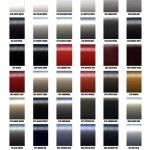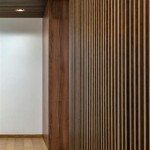Bedroom Interior Design: A Comprehensive Overview
Bedroom interior design focuses on creating a personal sanctuary optimized for rest, relaxation, and rejuvenation. It encompasses a blend of aesthetics, functionality, and individual preferences to cultivate a space that reflects the homeowner's personality and facilitates restful sleep. Effective bedroom design considers a multitude of elements, ranging from color palettes and lighting schemes to furniture selection and spatial arrangement. The ultimate goal is to craft a harmonious and comfortable environment that promotes well-being.
The bedroom, unlike other areas in a home, is predominantly private. This characteristic affords greater freedom in design choices, allowing for a more personalized expression of style. While adhering to basic design principles such as balance, harmony, and rhythm, the focus should remain on creating a space that caters to the specific needs and desires of the occupant. A well-designed bedroom is conducive to both waking moments of preparation and relaxation and the restorative sleep necessary for overall health.
Key Point 1: Prioritizing Comfort and Functionality
Comfort and functionality are paramount in bedroom interior design. The bed itself is often the focal point, and its selection should prioritize both aesthetic appeal and ergonomic support. Mattress firmness, pillow loft, and bedding materials significantly impact sleep quality. Therefore, careful consideration should be given to these factors to ensure optimal comfort. Beyond the bed, functional considerations include adequate storage solutions, appropriate lighting, and comfortable seating arrangements.
Storage is a crucial aspect often overlooked in bedroom design. Clutter can contribute to stress and impede relaxation. Efficient storage solutions help maintain order and create a more tranquil environment. Built-in wardrobes, under-bed storage drawers, and strategically placed shelving units can maximize space and minimize clutter. The chosen storage solutions should seamlessly integrate with the overall design aesthetic.
Lighting plays a pivotal role in setting the mood and enhancing functionality. A layered lighting scheme, incorporating ambient, task, and accent lighting, is generally recommended. Ambient lighting provides overall illumination, while task lighting focuses on specific activities such as reading or dressing. Accent lighting highlights architectural features or decorative elements, adding depth and visual interest. Dimmers provide flexibility in adjusting light levels to suit different activities and preferences. Natural light should also be maximized to create a bright and airy space.
Seating arrangements, even in smaller bedrooms, can enhance functionality and comfort. A comfortable armchair or window seat provides a designated space for reading, relaxing, or simply enjoying the view. The scale and style of the seating should be proportionate to the room's dimensions and complement the overall design aesthetic. Adding a small side table provides a convenient surface for drinks, books, or other essentials.
Key Point 2: The Influence of Color and Texture
Color and texture significantly influence the ambiance and overall aesthetic of a bedroom. Color psychology suggests that certain colors can evoke specific emotions and affect mood. Cool colors, such as blues and greens, are often associated with calmness and tranquility, making them popular choices for bedrooms. Warm colors, such as yellows and oranges, can create a cozy and inviting atmosphere. However, personal preferences should ultimately guide color selection.
The use of color extends beyond wall paint. Bedding, curtains, rugs, and accessories all contribute to the overall color scheme. Employing a consistent color palette or incorporating complementary colors can create a harmonious and cohesive look. Accenting with pops of color can add visual interest and prevent the space from feeling monotonous. Neutral color schemes provide a versatile backdrop that can be easily customized with different accessories and accent colors.
Texture adds depth and dimension to a space, enhancing its tactile appeal. Different textures can be incorporated through bedding materials, rugs, curtains, wall coverings, and furniture upholstery. Combining smooth and rough textures, such as silk and linen, or wood and metal, creates visual interest and adds a layer of sophistication. A plush rug underfoot, soft bedding, and textured throws can contribute to a sense of comfort and luxury.
Wall coverings, such as wallpaper or textured paint, can also significantly impact the texture and overall aesthetic of a bedroom. Wallpaper offers a wide range of patterns and textures, allowing for personalized expression and unique design statements. Textured paint provides a subtle yet effective way to add depth and visual interest to walls. The chosen wall covering should complement the overall color scheme and design aesthetic.
Key Point 3: Personalization and Reflecting Individual Style
The bedroom is a personal sanctuary, and its design should reflect the individual's unique style and preferences. Personalization is key to creating a space that feels comfortable, inviting, and truly your own. Incorporating personal touches, such as artwork, photographs, collectibles, and meaningful objects, adds character and creates a sense of belonging. These personal elements should be thoughtfully curated and arranged to enhance the overall aesthetic and tell a story.
Artwork is a powerful tool for personalizing a bedroom. Paintings, prints, photographs, or sculptures can add visual interest, express personal tastes, and create a focal point. The chosen artwork should complement the color scheme and design aesthetic of the room. Consider the size and scale of the artwork in relation to the wall space and furniture arrangement. A gallery wall can be a visually striking way to display a collection of smaller artworks.
Photographs of loved ones, travel memories, or significant life events can add a personal and sentimental touch to the bedroom. Displaying photographs in frames, albums, or on a photo wall creates a sense of connection and evokes positive emotions. Consider the style and finish of the frames to complement the overall design aesthetic. Arranging photographs in a cohesive and visually appealing manner enhances their impact.
Collectibles and meaningful objects can also be incorporated into the bedroom design. These items can range from vintage finds and antique pieces to handcrafted items and souvenirs from travels. Displaying these objects in a thoughtful and curated manner adds character and tells a story. Consider using shelves, display cases, or shadow boxes to showcase these items. The arrangement should be visually appealing and complement the overall design aesthetic.
Ultimately, a well-designed bedroom is a testament to the individual's personality and serves as a refuge from the stresses of daily life. The careful consideration of comfort, functionality, color, texture, and personalization results in a space that is not only aesthetically pleasing but also conducive to rest, relaxation, and rejuvenation.

Smart Bedroom Interior Design Ideas For Stylish N Homes

Stylish Bedroom Decor And Interior Tips Decorpot

10 Interior Design Styles For Your Bedroom Cafe

Luxury Bedroom Design Tips And Trends

10 Interior Design Styles For Your Bedroom Cafe

Bedroom Decor 101 Top Interior Design Trends And Tips To Transform Your Space Hindustan Times

Art Deco Bedroom Design Ideas For Your Home Designcafe

18 Bedroom Interior Design Ideas High On Style And Comfort

Residential Bedroom Interior Services Shomli

25 Luxury Bedroom Interior Design For Creating Your Dream Retreat
Related Posts








